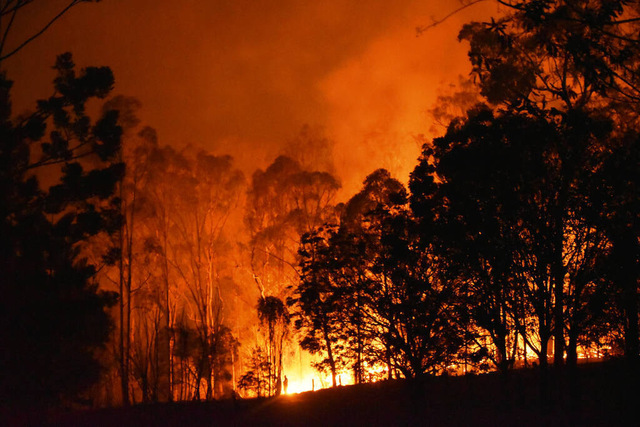As temperatures heat up, University of the Sunshine Coast researchers are working on new ways to prevent bushfire harm across Australia.
The projects continue as South East Queensland enters a six-day fire ban from Thursday, and as busfire intesity increases along with climate change and heightened fuel loads from diminished rainfall.
UniSC currently have several collaborative projects at UniSC’s Forest Research Institute to help the country protect its people, property and environment.
PhD student Jady Smith is researching water management methods for green firebreaks to help reduce the spread and intensity of bushfires in the wildland-urban interface.
“Bushfires are complex hazards that call for a range of solutions, and it is time to become more proactive than reactive”, and “Green Firebreaks have site-specific potential to enhance bushfire mitigation, preparation, response and recovery”, he says.
“Irrigating Green Firebreaks may strengthen their effectiveness in complementing wildfire management. For the vulnerable Wildland Urban Interface, Irrigated Green Firebreaks may be a strategic wildfire management option where urban reuse water is available.”
Research Fellow Shelby Schumacher is working on NOBURN (National Bushfire Resilience Network), a project that combines citizen science and artificial intelligence to improve bushfire preparedness.
“Our app turns community photos into data to help researchers and agencies understand bushfire hazards such as the amount of forest fuel in a region.
“It also provides insights into the likelihood, severity and potential extent of burnt area from fires across Australia.”
Citizen science and the app can be found at noburn.app/
Adjunct Research Fellow Sohel Shawkat is calling for authorities worldwide to invest in next-generation fire forecasting systems.
He proposes a new approach that uses remote sensing and detailed data about the functionality of plants in particular locations to detect critical moisture thresholds before ignition, beyond which probability of fire occurrence would be higher.
“It is vital to know vegetation moisture content, for example,” he says.
“Climate change is drying landscapes unevenly and creating flammable conditions in once-resilient ecosystems.
“The technology exists. The science is ready. We need to forecast bushfire risk the same way we predict storms – days or even weeks in advance.”
Senior Research Fellow Martin Strandgard is investigating how to minimise the impacts of fire on Australia’s commercial radiata pine estate, worth billions of dollars to the economy.
“I’m working on a three-year study to analyse the costs and benefits of removing more of the waste left on forest floors after radiata pine trees have been thinned out.
“Thinning waste can double the amount of fuel on the forest floor, considerably increasing the risk of losses from fire.”
Professor Francis (Jack) Putz focuses on the role of fire ecology in the conservation and management of pine savannas and tropical forests around the world.
His latest research aims to protect tropical dry forests in Fiji from the combination of warming climate, weather events and bushfires.







